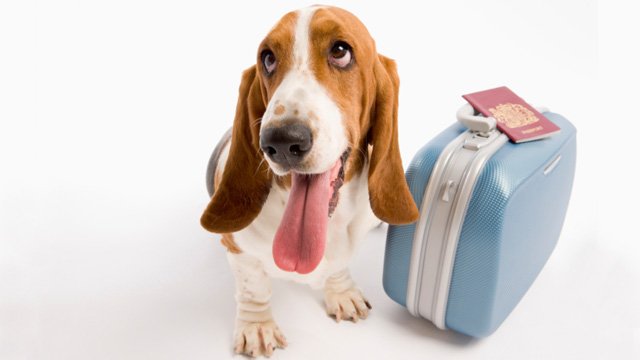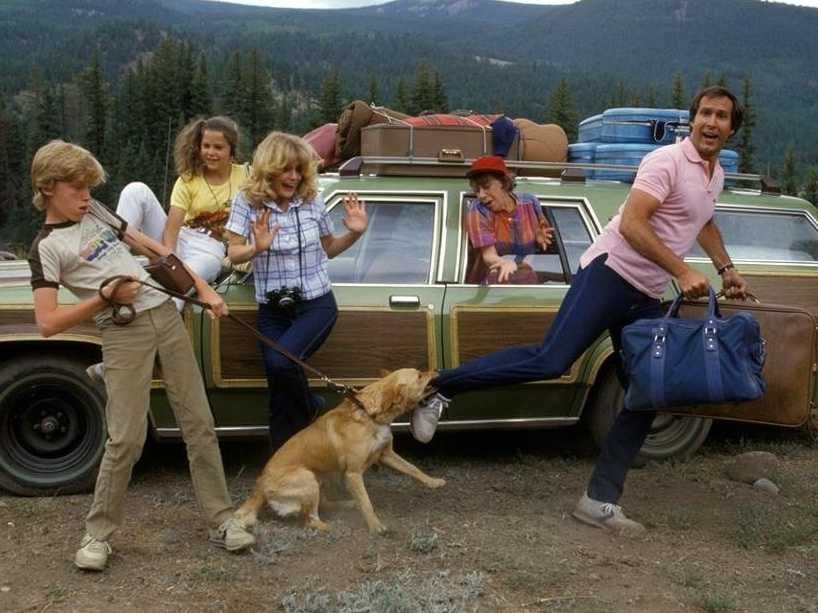Top Tips for Traveling with your Dog
by Mickey Miles
Thinking about traveling with your dogs? Taking your dog with you on your next vacation can make the trip more fun whilst also reducing your worries about leaving your dog with a sitter or at a kennel. All you need to do is be prepared and plan carefully. Keep these top tips in mind while traveling with your dog!
The travel industry has had to adapt to this growing demand for more people wanting to travel with their dogs. Of course if your a Cat person you can certainly travel with your Cat as well and these Dog travel tips can be useful for traveling with Cats as well. But you may want to read my article Should I travel with my Cat first. As someone who is extremely passionate about traveling and dogs, I wanted to share some of the top tips I have learned for traveling with your dog. Taking your dog along can make the family vacation more fun for everyone, if you plan carefully.
Tips for Health And Safety of your Dog while Traveling
- Health Checks. Bring your dog to the veterinarian for a checkup before going on an extended trip. Make sure all his vaccinations are up-to-date; take shot records with you. Health certifications are required for airline travel. Ask your veterinarian if your dog is in proper mental and physical shape to travel. Remember that not all dogs will enjoy going on a trip.
- To keep your dog healthy as you travel, bring along a supply of his regular food. Don’t forget bottled water and be sure to bring any medications he needs.
- Be prepared for an emergency. Find the number of the nearest 24-hour veterinary emergency hospital and program it into your cell phone, along with the office and emergency number for your regular veterinarian (in case the veterinarians need to speak with each other). That way, if there’s a situation where your dog needs medical attention, you are prepared with the necessary information on hand.
Do you plane to Travel with your Dogs Crates ?
We highly recommend taking a crate or carrier with you to make traveling with your dog better. When you and your dog are traveling by car keep your dog safely secure in the back seat of the car with a crate or carrier. When you are travelling by plane, a carrier will be necessary whether travelling in the cabin or below the plane. A crate or carrier will also make it easier once you get to your final destination and if you take overnight or longer stops during the journey as it can double as a sleeping place. We love the Revol Crate , it assembles and collapses in minutes and features wheels to make transporting a breeze. Look for these features when purchasing:- Large enough to allow the dog to stand, turn, and lie down.
- Strong, with handles and grips, and free of interior protrusions.
- Leak-proof bottom covered with absorbent material.
- Ventilation on opposing sides, with exterior rims or knobs to prevent blocked airflow.
- “Live Animal” label, arrows showing upright position, with owner’s name, address, and phone number.
- Stock the crate with a comfortable mat, your dog’s favorite toy, and a water bottle, and your dog is ready to go.

Dog Travel Tips for Identification
In the event that your dog gets away from you on your trip, you can increase the chances of recovery by making sure he can be properly identified:- Take your usual collar and leash/harness and make sure they have ID tags and an extra tag with info on your final destination complete with the best contact number for you while travelling.
- Pack a spare collar with ID tags and leash if you have space.
- Bring a recent picture of your dog along with you, as well as a copy of his health records listing all of his recent vaccinations.

Tips for Traveling By Car with your Dog
- If your dog is accustomed to car rides, this shouldn’t be necessary but if not, make sure you slowly get them used to being in the car before traveling with your dog.
- Dogs like people can get queasy when in the car. Travel on an empty stomach with pleanty of water, especially if you’ve noticed your dog feeling sick during practice journeys.
- Keep the car well ventilated. If the dog is in a crate, make sure that fresh air can flow into the crate.
- Never let your dog ride in the back of an open truck bed. This is extremely dangerous and can lead to severe injuries or death.
- Stop frequently for exercise and potty breaks. Be sure to clean up after your dog.
- Complete your dog car oasis with their favourite blankets, bed (if there is space), and toys from home. A distracting chew toy like a Nyalbone is our favorite.
- Never, ever leave your dog unattended in a vehicle particularly in the summer. Some AKC summer safety tips for more information. If you must leave the car, designate a member of the family to stay with the dog
Tips for Flying with your Dog
For starters, bringing your pup along is definitely more complicated and expensive but it can be done—so long as you do your research ahead of time. Right off the bat, think long and hard about whether it’s essential to bring your dog on a plane. Think about it: Flying can be a stressful experience for your dog. It removes them from comfortable and familiar surroundings, then forces them into a situation with loud noises, bright lights, thousands of people, changes in air pressure and cabin temperature, and a limited ability to use the bathroom. Unless you have a really good reason for bringing your pet with you during your travels, it may be best to leave them home.- When traveling by plane, plan to visit your veterinarian before your trip. Certification of health must be provided to the airline no more than 10 days before travel. Rabies and vaccination certificates are also required. Your dog should be at least 8 weeks old and weaned.
- Airlines make it clear that it is the owner’s responsibility to verify the dog’s health and ability to fly. Ask your veterinarian if it would be best for your dog to be tranquilized for the trip. Also, be sure to check the temperature of the flight’s starting point and destination; it may be too hot or too cold to be safe for your dog.
- Federal regulations prohibit shipping live animals as excess baggage or cargo if an animal will be exposed to temperatures that are below 45 degrees Fahrenheit or above 85 degrees Fahrenheit for more than four hours during departure, arrival, or while making connections.
- Remember that each airline has its own variations on regulations and services. For example, if your crate doesn’t meet its requirements, the airline may not allow you to use it. They may, however, allow your dog in the passenger cabin if your crate or carrier fits under the seat in front of you.
- When making your reservations, you must make reservations for your dog. There are restrictions on the number of animals permitted on each flight. They are accepted on a first-come, first-served basis.
Tips for Traveling by Train, Bus Or Boat with your Dog
If you plan to bring your dog along for a train or bus ride, you may be disappointed. Only dogs under 20 pounds are permitted on Amtrak trains (There is also a $25 fee). Dogs are not allowed on buses operated by Greyhound and other interstate bus companies. (Service dogs are permitted.) Local rail and bus companies have their own policies. If your planning a cruise thats not a good option either. The Cunard Line has the only major cruise ship, the Queen Mary 2 that allows cats and dogs on board. There are many, many caveats. Can i take my Dog on a CruiseBest Practices When Traveling With Your Dog
- Plan potty breaks before you leave home, teach your dog to relieve himself on multiple surfaces — not just grass! Having the ability to potty on different terrains, such as concrete, mulch, and gravel, will alleviate his discomfort as well as the possibility of accidents while you’re on the road. Dont forget your poop bags! Br
- Bring Toys, some balls, frisbee or a favorite game your dog enjoys. so he doesn’t get bored. Maybe a puzzle toy for the car if your dog enjoys those.
- Pack food and water. Check with your veterinarian about giving your dog only bottled water while away from home to ensure that he doesn’t get an upset stomach. And instead of taking his usual bulky bowls, buy collapsible ones and let him get used to using them one week or so before you travel.
- Research dog friendly places ahead of the trip: Before traveling with your dog, become familiar with dog friendly hotels, restaurants, stores, attractions and accommodation at your final destination and stops on the way. Our city guides have some great dog friendly recommendations!
- Consider where you are going: Consider your environment when you arrive at the final destination. Will you need products for an environment that is colder or hotter than home? Will your dog need extra flea and tick treatments? Will they be spending a lot of time outdoors or more time inside? Then pack and plan accordingly.
- Know your dog: Some dogs just aren’t made for traveling long distances no matter how well prepared you are. Is your dog’s personality suitable for travelling by car for a long distance, being on a plane (and being alone if not allowed in the cabin), and being in a brand-new environment around different people? If you are having second thoughts, find a recommended dog sitter, friend, or family member that you and your dog are comfortable with to take care of your pet.
